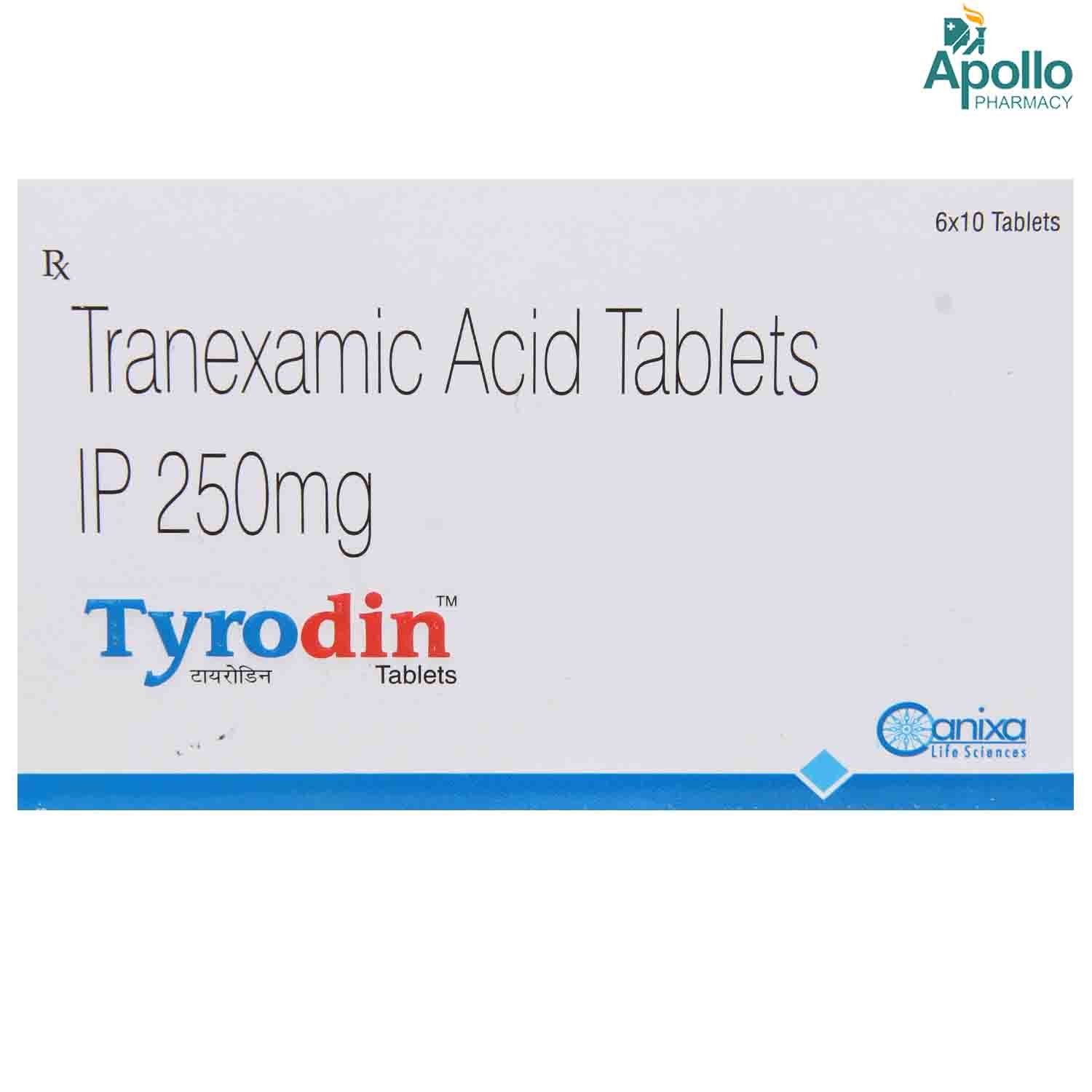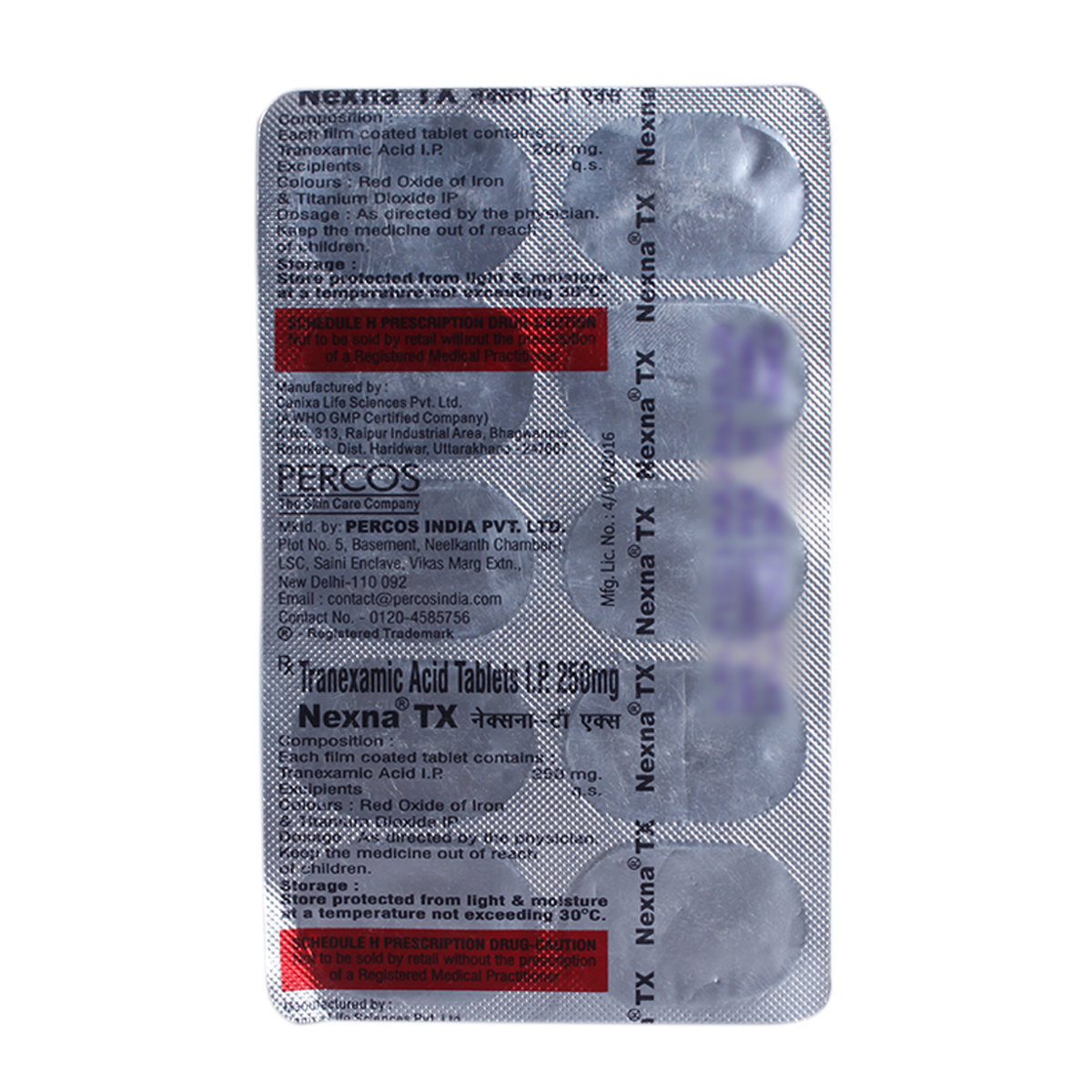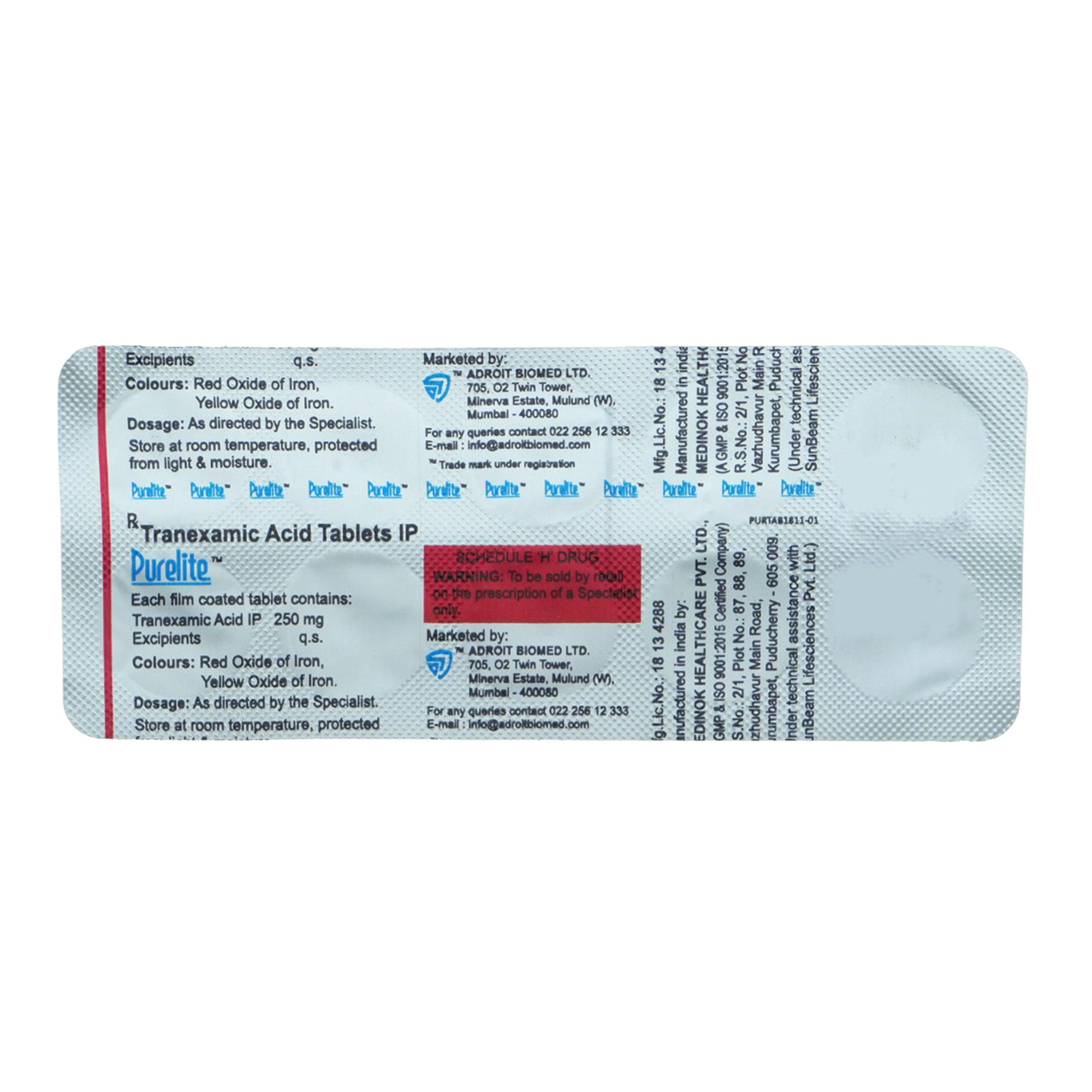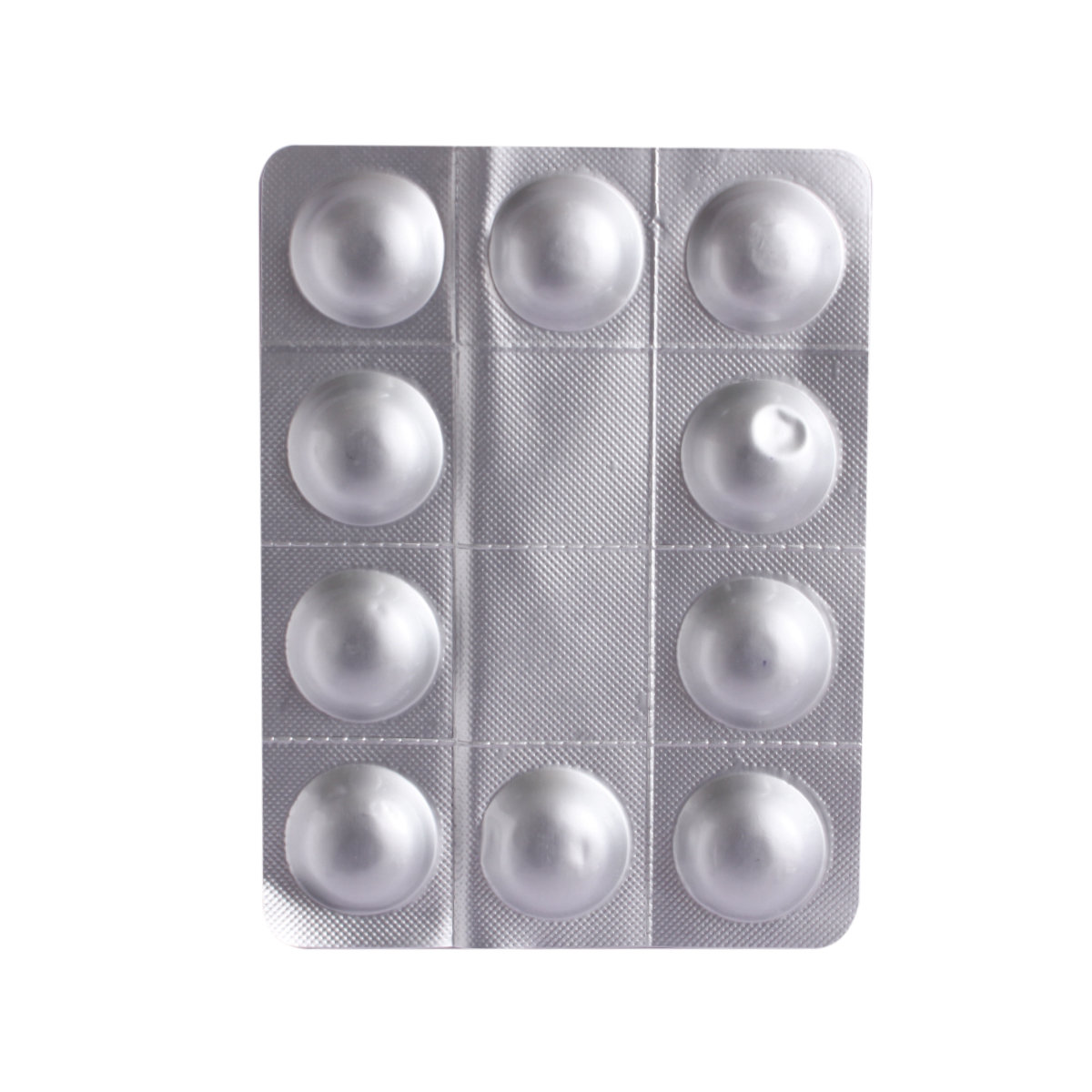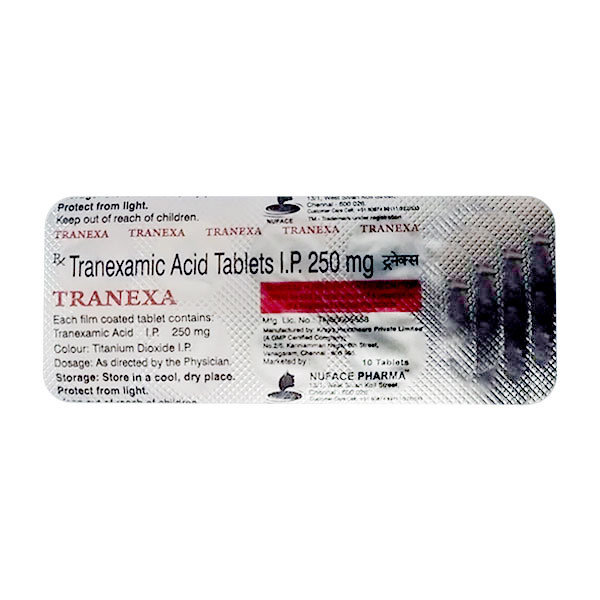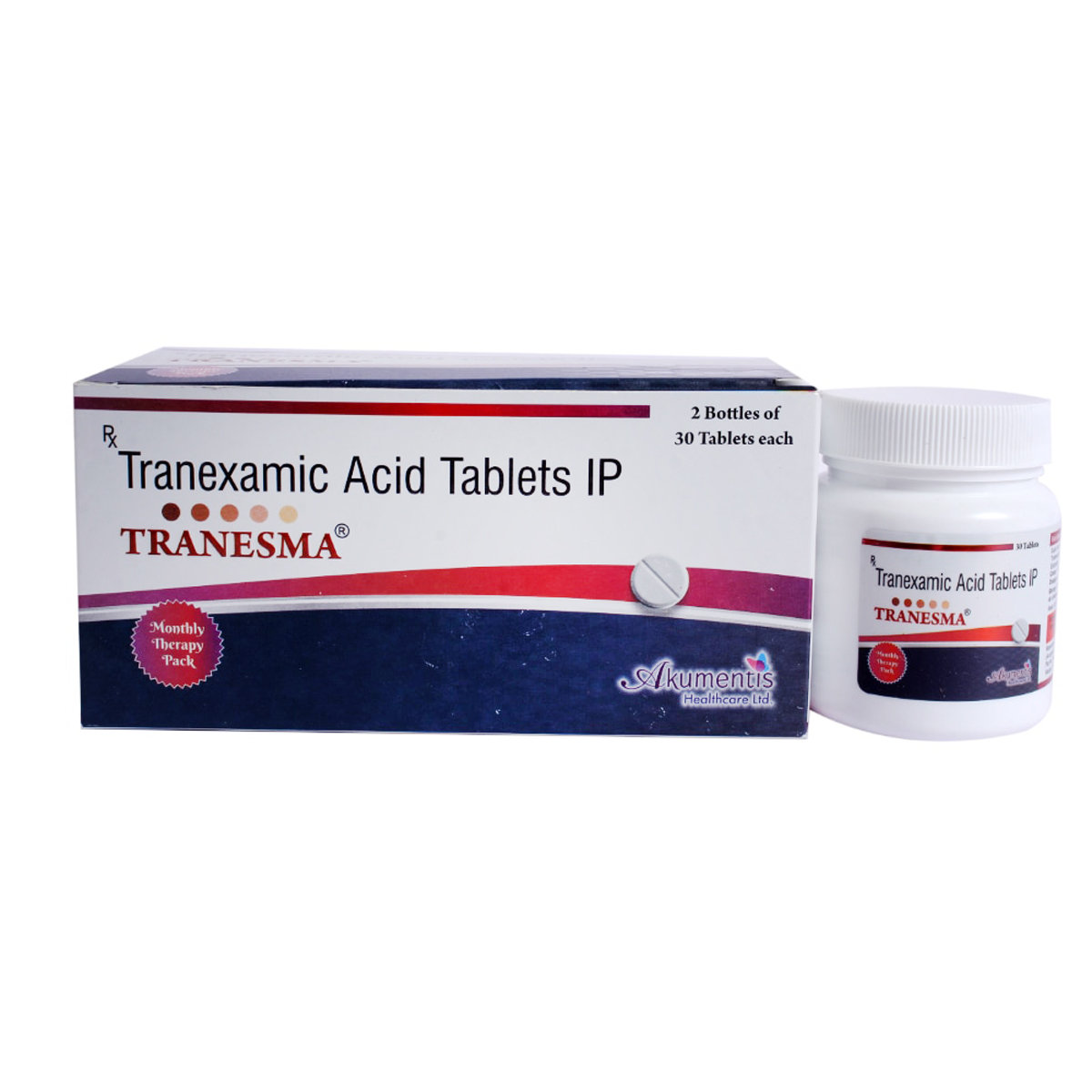Tremic M 250mg Tablet


MRP ₹199
(Inclusive of all Taxes)
₹29.9 Cashback (15%)
Provide Delivery Location
Online payment accepted
 Prescription drug
Prescription drugWhats That
Composition :
Manufacturer/Marketer :
Consume Type :
Return Policy :
About Tremic M 250mg Tablet
Tremic M 250mg Tablet belongs to the class of medications called ‘anti-fibrinolytic drugs’ used to treat abnormal or unwanted bleeding. It is used to control bleeding in conditions such as heavy periods (menorrhagia), nose bleeds (epistaxis), cervical surgery (conization of the cervix), prostate surgery (post-prostatectomy), bladder surgery (post-cystectomy), bleeding inside the eye (traumatic hyphaema) and a hereditary disease called angioneurotic edema (HANO). The solution form of this medicine is used before tooth removal (dental extraction) in hemophiliacs (people who bleed more easily than normal).
Tremic M 250mg Tablet contains ‘tranexamic acid’, which belongs to the class of ‘anti-fibrinolytic agents’. It is generally used for short-term treatment of bleeding. It acts by regulating the breakdown of blood clots. It blocks the release and action of plasmin which is an enzyme essential for the breakdown of clots present in the blood. This effect helps to slow down the bleeding.
Tremic M 250mg Tablet should be taken as advised by your physician. The dose and duration of the medicine will be decided by your doctor based on your health condition. Tremic M 250mg Tablet may not cause any side effects when used orally. However, some patients may experience certain side effects, such as feeling sick (nausea), diarrhea, and itchy skin. These side effects usually go away on their own. If you develop any other serious side effects, such as vision problems while using Tremic M 250mg Tablet, consult your doctor immediately.
Tremic M 250mg Tablet should be avoided if you are allergic to it or any other ingredients present in it. Do not take this medicine if you have a history of kidney disease, thrombosis (formation of blood clots in the blood vessels), disseminated intravascular coagulation (a disease where blood clots form throughout your body) , and seizures (fits). Inform your doctor if you are taking birth control pills or fibrinolytic agents (medicines that dissolve blood clots). Also, inform your doctor if you are pregnant, planning to become pregnant or breastfeeding.
Uses of Tremic M 250mg Tablet
Directions for Use
Key Benefits
Tremic M 250mg Tablet contains ‘tranexamic acid’, which belongs to the class of ‘anti-fibrinolytic agents’. It acts by regulating the breakdown of blood clots in the body. It blocks the release and action of plasmin, an enzyme essential for the breakdown of clots in the blood. This effect helps to slow down abnormal bleeding.
Storage
- Drink water or other clear fluids.
- To prevent worsening of pain, limit intake of tea, coffee, or alcohol.
- Include bland foods like rice, toast, crackers, and rice in your diet.
- Avoid lying down immediately after eating as it may cause indigestion or heartburn.
- Avoid acidic and spicy food as it may cause indigestion.
- Talk to your doctor about your back pain and potential medication substitutes or dose changes.
- Try yoga or Pilates and other mild stretching exercises to increase flexibility and strengthen your back muscles.
- To lessen the tension on your back, sit and stand upright and maintain proper posture.
- To alleviate discomfort and minimize inflammation, apply heat or cold packs to the afflicted area.
- Under your doctor's supervision, think about taking over-the-counter painkillers like acetaminophen or ibuprofen.
- Make ergonomic adjustments to your workspace and daily activities to reduce strain on your back.
- To handle tension that could make back pain worse, try stress-reduction methods like deep breathing or meditation.
- Use pillows and a supportive mattress to keep your spine in the right posture as you sleep.
- Back discomfort can worsen by bending, twisting, and heavy lifting.
- Speak with a physical therapist to create a customized training regimen to increase back strength and flexibility.
- Include omega-3 rich foods like fatty fish, ground flax, flaxseed oil, and walnuts.
- Consume calcium-rich dairy products for bone health.
- Eat green and leafy vegetables for essential nutrients.
- Include lean protein sources like eggs and whole grains.
- Use herbs and spices for added flavor and nutrition.
- Choose fortified foods for extra nutritional benefits.
- Get plenty of sleep for overall health and well-being.
- Hydrate your body: Drink enough water to prevent dehydration and headaches.
- Calm Your Mind: Deep breathing and meditation can help you relax and relieve stress.
- Rest and Recharge: Sleep for 7-8 hours to reduce headache triggers.
- Take rest: lie down in a quiet, dark environment.
- Cold or warm compresses can help reduce tension.
- Stay Upright: Maintain good posture to keep symptoms from getting worse.
- To treat headaches naturally, try acupuncture or massage therapy.
- Over-the-counter pain relievers include acetaminophen and ibuprofen.
- Prescription Assistance: Speak with your doctor about more substantial drug alternatives.
- Severe Headaches: Seek emergency medical assistance for sudden, severe headaches.
- Frequent Headaches: If you get reoccurring headaches, consult your doctor.
- Headaches with Symptoms: Seek medical attention if your headaches include fever, disorientation, or weakness.
- Lie down or take a nap in dark and quiet room.
- To avoid dehydration, drink plenty of fluids.
- In case of mild to moderate migraine, you can take over-the-counter pain relievers like paracetamol or ibuprofen.
- Apply an ice pack or cool cloth on your forehead.
- Try relaxation techniques such as yoga, meditation, or deep breathing to reduce stress and relax.
- Avoid foods and drinks that trigger migraine such as chocolate, alcohol, cheese, caffeine, processed meats, artificial sweeteners and dried fruits.
- Manage your stress by eating healthy, exercising and a regular sleep schedule.
Drug Warnings
Before taking Tremic M 250mg Tablet, inform your doctor if you notice blood in your urine (except during periods), or have a history of uncontrollable bleeding, disseminated intravascular coagulation (DIC) (a disease where blood clots form throughout your body), irregular periods, and kidney disease. Also, inform your doctor if you or your family has a history of thrombosis (formation of blood clots in the blood vessels). Let your doctor know if you are taking medicine to treat a hereditary disease called angioneurotic edema (HANO) every day for a long time. Your doctor may advise regular eye tests and blood tests to check your vision problems and also liver/kidney functioning. Inform your doctor if you are using birth control pills, including the patch, vaginal ring, and an intrauterine device (IUD), as there is a risk of deep vein thrombosis (a condition in which a blood clot is formed in the deeper vein, mostly the legs). Inform your doctor if you are using fibrinolytic agents (drugs that break blood clots) such as streptokinase, as they may stop the effect of Tremic M 250mg Tablet. Inform your doctor if you are pregnant, planning to become pregnant or breastfeeding.
Drug-Drug Interactions
Drug-Drug Interactions
Login/Sign Up
Taking drospirenone with Tremic M 250mg Tablet may increase the risk of blood clot formation.
How to manage the interaction:
Taking Tremic M 250mg Tablet with Drospirenone is not recommended, as it can lead to an interaction but can be taken if prescribed by the doctor. However, If you suffer from chest discomfort, shortness of breath, blood in the urine, blood in the cough, sudden loss of vision, and pain, redness, or swelling in your arm or leg, consult your doctor immediately.
Taking Levonorgestrel with Tremic M 250mg Tablet may increase the risk of blood clot formation which can lead to serious conditions such as heart problems and kidney failure.
How to manage the interaction:
Taking Tremic M 250mg Tablet with Levonorgestrel may leads to an interaction but can be taken if prescribed by the doctor. However, if you experience chest pain; shortness of breath; coughing up blood; blood in the urine; sudden loss of vision; and pain, redness, or swelling in your arm or leg, consult the doctor immediately. Do not stop using any medications without talking to a doctor.
Taking Ethinylestradiol with Tremic M 250mg Tablet may increase the risk of blood clot formation.
How to manage the interaction:
Taking Ethinylestradiol with Tremic M 250mg Tablet is not recommended, as it can lead to an interaction, but can be taken if a doctor has prescribed it. However, if you suffer from chest discomfort, shortness of breath, blood in the urine, blood in the cough, sudden loss of vision, and pain, redness, or swelling in your arm or leg, consult doctor immediately. Do not stop using any medications without talking to a doctor.
Taking Medroxyprogesterone acetate with Tremic M 250mg Tablet may increase the risk of blood clots.
How to manage the interaction:
Taking Medroxyprogesterone with Tremic M 250mg Tablet is not recommended but can be taken if prescribed by a doctor. Consult your doctor immediately if you experience symptoms such as chest pain, shortness of breath, coughing up blood, blood in the urine, sudden loss of vision, and pain, redness, or swelling in your arm or leg. Do not stop using any medications without talking to your doctor.
Co-administration of Tremic M 250mg Tablet may cause blood clotting when taken with Etonogestrel.
How to manage the interaction:
Taking Tremic M 250mg Tablet with Etonogestrel is not recommended, as it can lead to an interaction but can be taken if prescribed by the doctor. However, If you suffer from chest discomfort, shortness of breath, blood in the urine, blood in the cough, sudden loss of vision, and pain, redness, or swelling in your arm or leg, consult your doctor immediately.
Using Tremic M 250mg Tablet together with norethindrone may increase the risk of blood clots.
How to manage the interaction:
Taking norethisterone with Tremic M 250mg Tablet can lead to an interaction, however, it can be taken only if a doctor has advised it. If you experience symptoms such as chest pain, shortness of breath, coughing up blood, blood in the urine, sudden loss of vision, and pain, redness, or swelling in your arm or leg, contact a doctor immediately .Do not discontinue any medications without consulting a doctor.
Co-administration of Carfilzomib with Tremic M 250mg Tablet can increase the risk of blood clots.
How to manage the interaction:
Taking carfilzomib with Tremic M 250mg Tablet is not recommended due to its increased effects, however, it can be taken only if a doctor has advised it. If you experience symptoms such as chest pain, shortness of breath, difficulty breathing, coughing up blood, sudden loss of vision, pain, and numbness or weakness on one side of the body contact a doctor immediately. Do not discontinue any medications without consulting a doctor.
Co-administration of Estramustine with Tremic M 250mg Tablet can increase the risk of blood clots.
How to manage the interaction:
Taking Estramustine with Tremic M 250mg Tablet possibly lead to an interaction, however, it can be taken only if a doctor has advised it. If you experience symptoms such as chest pain, shortness of breath, difficulty breathing, coughing up blood, sudden loss of vision, pain, and numbness or weakness on one side of the body contact a doctor immediately. Do not discontinue any medications without consulting a doctor.
Co-administration of tamoxifen with Tremic M 250mg Tablet can increase the risk of blood clots.
How to manage the interaction:
Although taking tamoxifen and Tremic M 250mg Tablet together can possibly result in an interaction, it can be taken if your doctor has prescribed it. However, consult the doctor immediately if you experience symptoms such as chest pain, shortness of breath, difficulty breathing, coughing up blood, sudden loss of vision, pain, redness or swelling in an arm or leg, and numbness or weakness on one side of the body. Do not discontinue any medications without consulting a doctor.
Co-administration of tretinoin with Tremic M 250mg Tablet may increase the risk of blood clots.
How to manage the interaction:
Taking tretinoin with Tremic M 250mg Tablet is not recommended due to its increased effects, however, it can be taken only if your doctor has advised it. If you experience symptoms such as chest pain, difficulty breathing, coughing up blood, sudden loss of vision, pain, and numbness or weakness on one side of the body contact a doctor immediately. Do not discontinue any medications without consulting a doctor.
Drug-Food Interactions
Drug-Food Interactions
Login/Sign Up
Diet & Lifestyle Advise
- Ask your doctor about the preferred exercises to do based on your health condition.
- Stay hydrated and consume plenty of fluids. Fluids are necessary to maintain blood flow in your body.
- Consume fresh fruits and vegetables. Consult a dietitian and prepare a diet plan. Eating healthy can help you to recover faster.
Side Effects of Tremic M 250mg Tablet
- Nausea
- Diarrhea
- Itchy skin
- Pain at the injection site
- Vision problems
- Vomiting
Habit Forming
Therapeutic Class
All Substitutes & Brand Comparisons
RX
Pynomax TX Tablet 10's
Galcare Pharmaceuticals Pvt Ltd
₹130
(₹11.7 per unit)
34% CHEAPERRX
Tyrodin Tablet 10's
Canixa Life Sciences Pvt Ltd
₹133
(₹11.97 per unit)
33% CHEAPERRX
Nexna Tx Tablet 10's
Percos India Pvt Ltd
₹143
(₹12.87 per unit)
28% CHEAPER
Product Substitutes
Drug-Diseases Interactions
Drug-Diseases Interactions
Login/Sign Up
FAQs
Tremic M 250mg Tablet is an 'antifibrinolytic agent' that can stop the bleeding effectively. It stops the breakdown of blood clots by inhibiting the action of plasmin (an enzyme essential for the breakdown of blood clots).
Tremic M 250mg Tablet should be used for short-term to control bleeding. Do not use it frequently or for long-term without consulting your doctor.
Tremic M 250mg Tablet cannot stop periods. It can only reduce the bleeding in cases of heavy bleeding. However, do not use this medicine for any indication without consulting your doctor.
Tremic M 250mg Tablet should not be taken with birth control pills, including the vaginal ring, intrauterine device and the patch, as there is a risk of ‘deep vein thrombosis’ (formation of a blood clot in the deeper vein, mostly legs). So, inform your doctor before taking Tremic M 250mg Tablet, if you are taking any birth control pills.
Tremic M 250mg Tablet may not affect fertility. It is used to stop abnormal bleeding during heavy periods. Inform your doctor before using this medicine to avoid any unwanted side-effects.
Tremic M 250mg Tablet can be used in children with caution. Your doctor may make dose adjustments based on the age, weight and health condition of your child.
Drug-Drug Interactions Checker List
- CHLORPROMAZINE
- TRETINOIN
- STREPTOKINASE
- UROKINASE
- ALTEPLASE
- RETEPLASE
- LEVONORGESTREL
Special Advise
- Your doctor may suggest regular eye check-ups while taking Tremic M 250mg Tablet.
- Increased risk of blood clot formation when co-administered with a combination oral contraceptive. Consult your doctor before taking any medication.
Disease/Condition Glossary
Menorrhagia: It is a condition characterized by heavy or prolonged bleeding during menstrual periods which last for more than seven days
Epistaxis: Bleeding from the nose when the blood vessels of the nose lining burst. This can occur due to dryness or nose injury.
Post-operative bleeding: It is bleeding after surgery due to the blood vessel rupture. Some people may experience mild to severe bleeding due to cuts made during surgery.
Traumatic hyphema: It is a condition characterized by the presence of blood in the anterior chamber of the eye due to a blunt injury. This condition may also result in vision loss.
Hereditary angioneurotic edema (HANO): It is a hereditary disease that causes recurrent painless swelling under the skin.
Dental Procedures: It is a procedure involving dental issues during which bleeding occurs.

Have a query?
Alcohol
Safe if prescribed
Tremic M 250mg Tablet may not interact with alcohol. However, avoid the consumption of alcohol as it may worsen your health condition.
Pregnancy
Consult your doctor
Tremic M 250mg Tablet is a category B medicine and may not cause toxic effects to the fetus. However, it should be used in pregnant women only when prescribed by a doctor. Your doctor will administer it only if the benefits overweigh the risk.
Breast Feeding
Consult your doctor
Tremic M 250mg Tablet should be used in breastfeeding mothers only if prescribed by a doctor. Your doctor will administer it only if the benefits overweigh the risk.
Driving
Safe if prescribed
The oral for of tranexamic acid may cause dizziness. Hence it is advised to avoid driving or operating machines for some period after receiving Tremic M 250mg Tablet.
Liver
Consult your doctor
Tremic M 250mg Tablet should be used with caution in patients with liver diseases. Your doctor may suggest for a dose adjustment if needed based on your health condition.
Kidney
Consult your doctor
Tremic M 250mg Tablet should be used with caution in patients with kidney diseases. Your doctor may suggest for a dose adjustment if needed based on your health condition.
Children
Safe if prescribed
Tremic M 250mg Tablet should be used in children below 12 years of age only if clinically needed. Dose adjustments are done by the child specialist.



